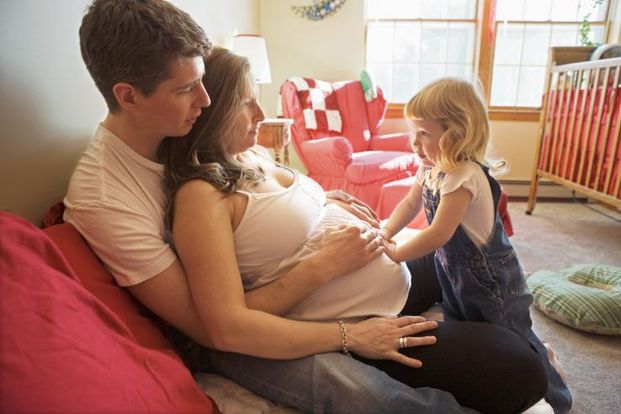30 weeks and 5 days pregnant

Here the hands are holding the umbilical cord as it arises from what will become the tummy button, or umbilicus. The umbilical coils and its covering of firm, clear jelly protect the cord from kinking and prying fingers.
If you want a home birth atmosphere with additional support, consider having your baby in a birthing unit.
Birthing units are run by midwives and the emphasis is on a natural birth. They can be situated next to a hospital maternity unit or on a separate site. Some hospitals have a birthing unit facility in the maternity unit. As the majority of women give birth without needing medical intervention, these units provide a good alternative to a more medicalized hospital environment. The environment in a birthing unit tends to be more relaxed and flexible than a hospital environment. You’ll have continuous support from midwives and may even be attended by the same midwife throughout your labour and birth. Furthermore, the midwives in these units are very experienced at handling a birth without medical intervention. All of these factors therefore increase your chances of having a straightforward birth. To be eligible to give birth in such a facility, you would need to have had an uncomplicated pregnancy and be unlikely to require specialized medical care or monitoring in labour and birth. If complications did occur, you would be transferred to the nearest maternity unit, although this is rare.

It’s important to prepare an older child for the arrival of a new brother or sister. Involve her as much as possible in your pregnancy: allow her to touch your expanding tummy, encourage her to talk to the baby, and take her with you for antenatal visits.
I’m having a home birth. Can my older children, aged four and six, be present at the birth?
There is nothing more wonderful or miraculous than the birth of a baby, and it’s natural to want your older children to be present and witness it for themselves. However, do consider this carefully before you give them the go-ahead. For one thing, even the easiest of labours are painful, and young children will be distressed to see mum in pain. What’s more, they may be slightly daunted to see their new sibling emerging from your body, probably covered with various substances. Having said that, many kids handle the experience well if they know what to expect, so outline everything, and explain that any cries, shrieks, or swearing on your behalf are necessary to help get the baby out. You could also mention that you may cry or even vomit, just so they are prepared. Let them know to expect some blood, and that baby will be attached to a (rather gruesome!) cord. If they’re squeamish, get them to position themselves by your head, or bring them in immediately after.
The prospect of sleeping in your own bed and being looked after by people who love you are reason enough to opt for a home birth. It’s natural to feel less inhibited at home, and you may be more inclined to move around more and for longer, be as vocal as you like, use gravity, and try different birthing positions, all of which can make labour and delivery shorter and easier. Your midwife will explain what’s involved, so seek her advice. On the big day be flexible: you may want to head for hospital.

Your baby still has slender arms and legs and little fat under the skin. His skin is covered with fine lanugo hair and waxy vernix and he now has eyebrows and eyelashes – his first mature hairs.
Be the first to support
Be the first to share
Comment (0)
Related Blogs & Vlogs
No related events found.
Loading more...